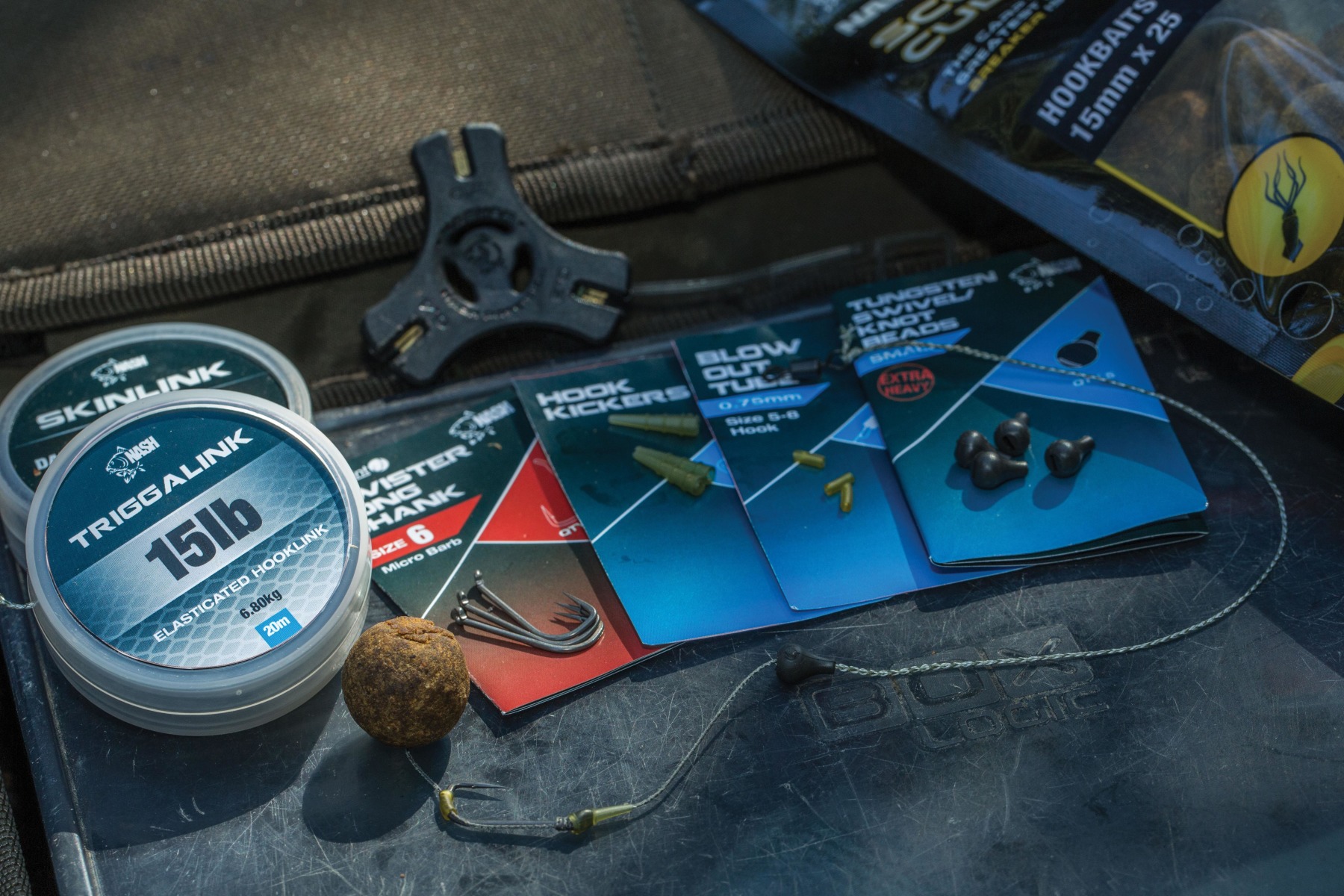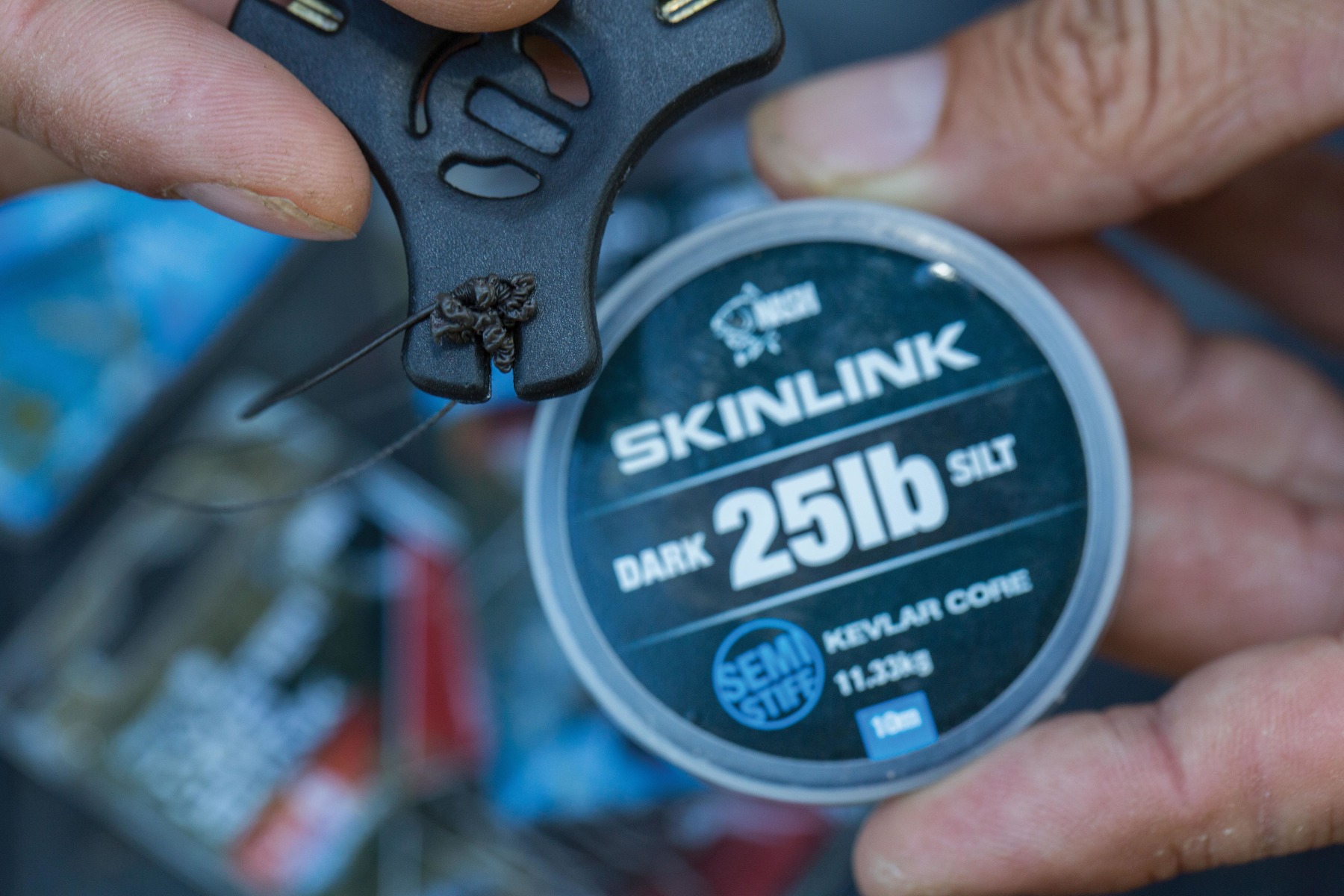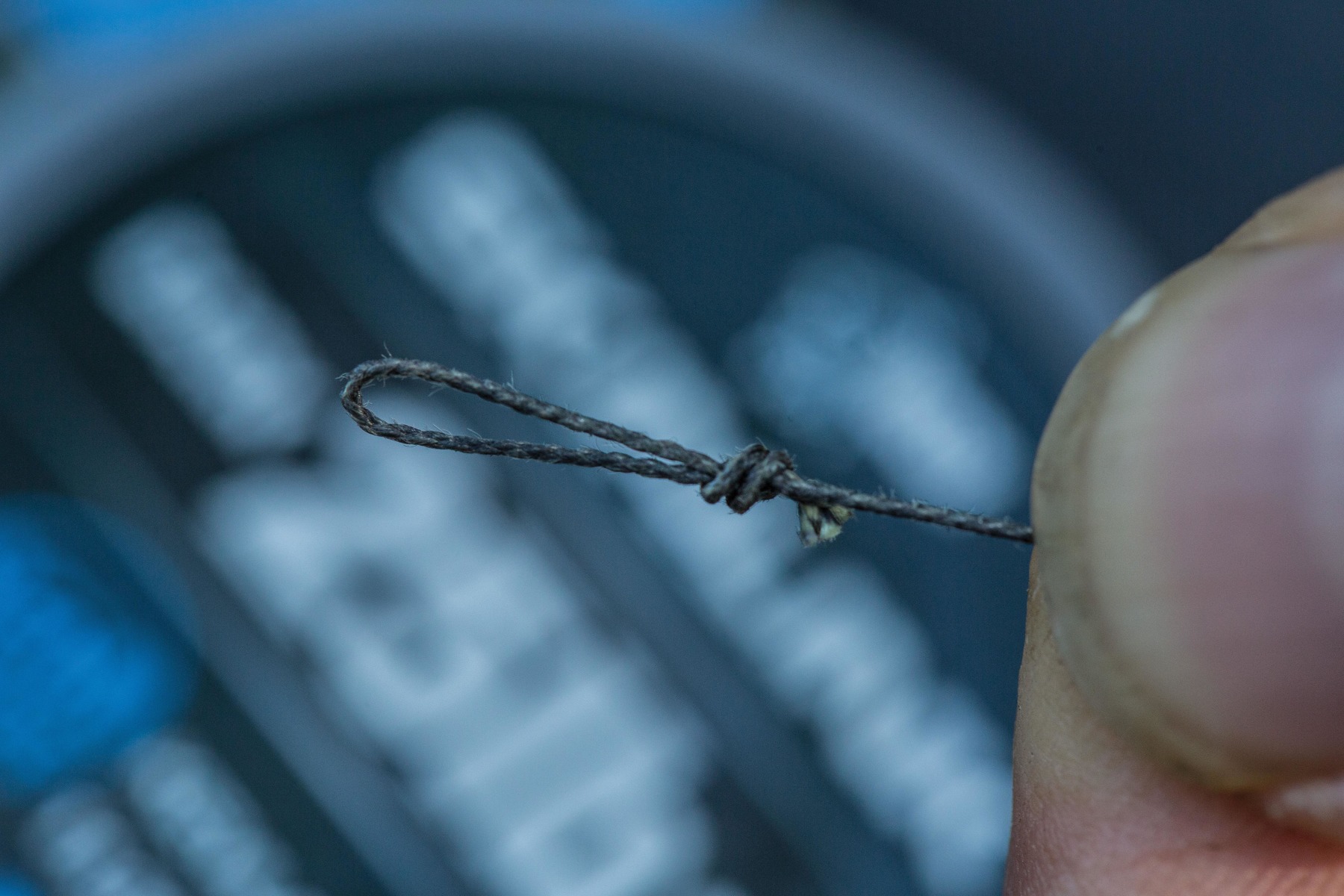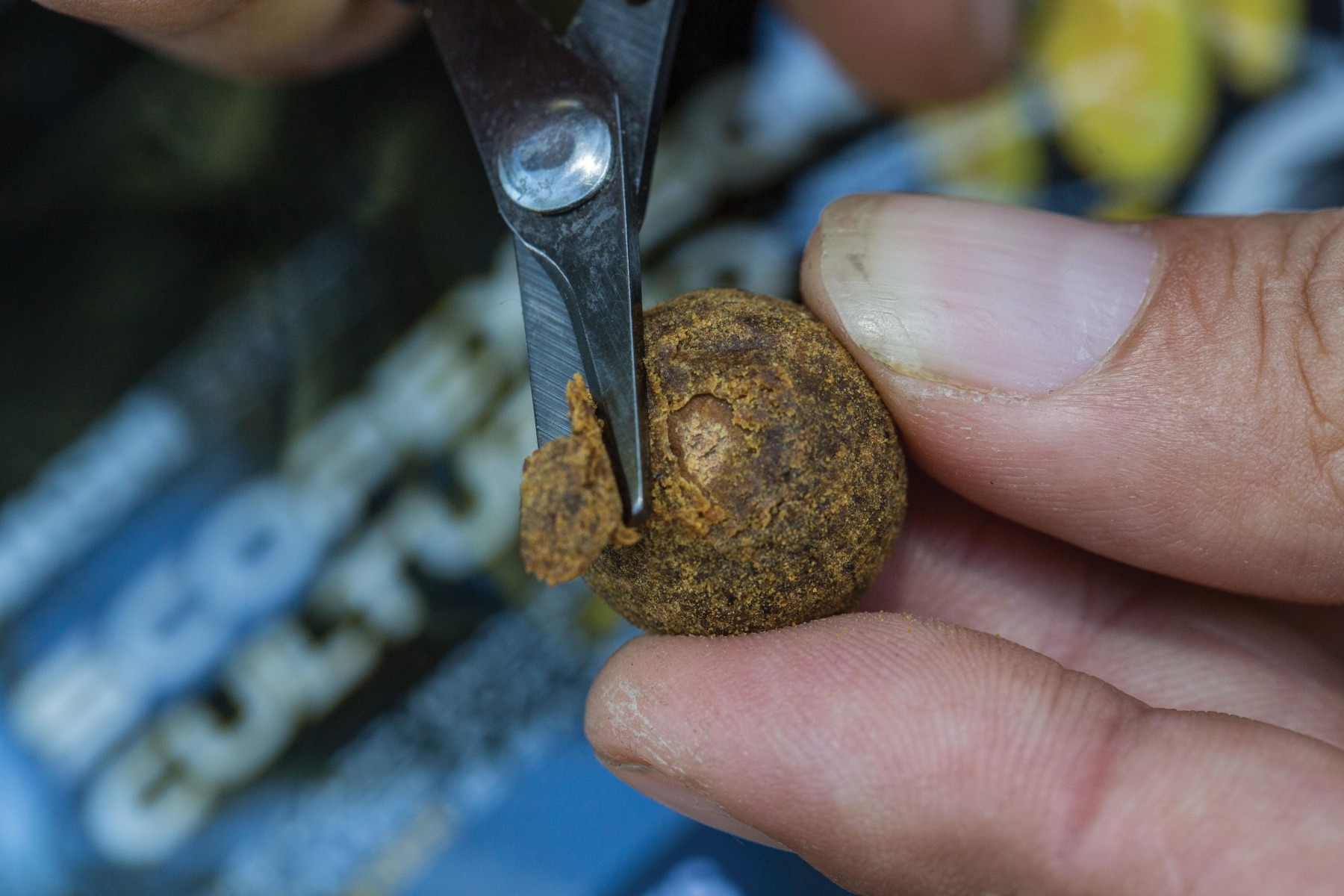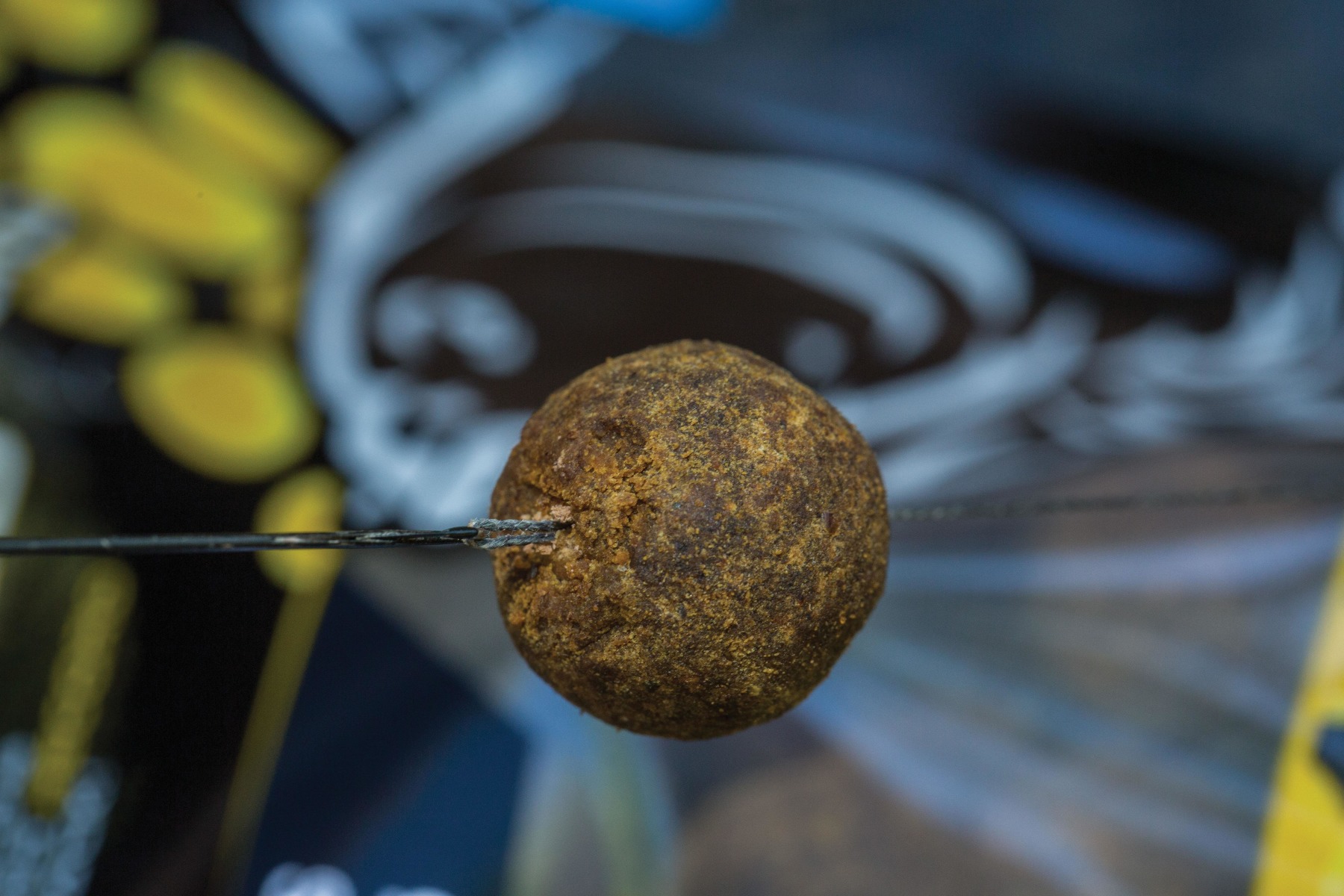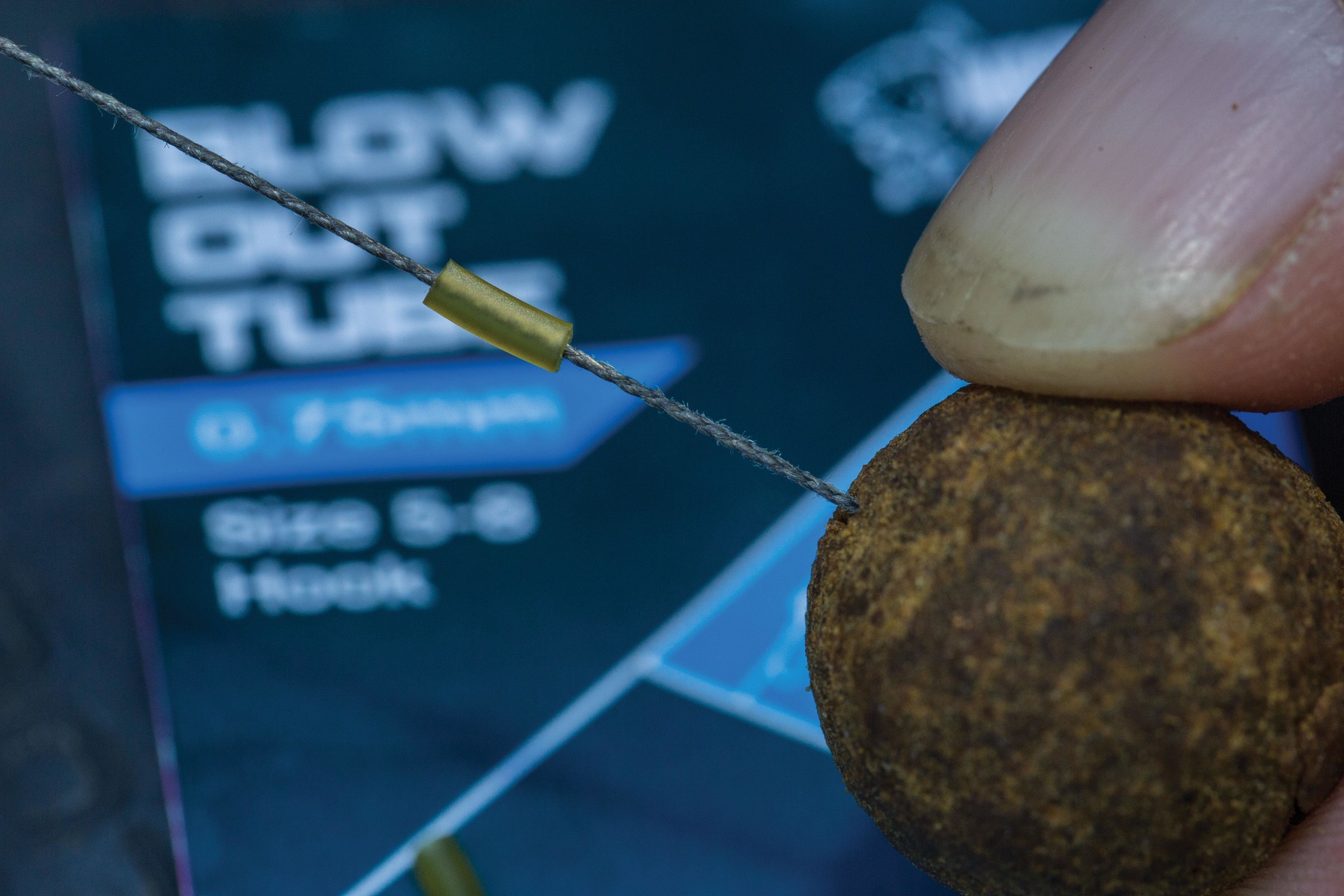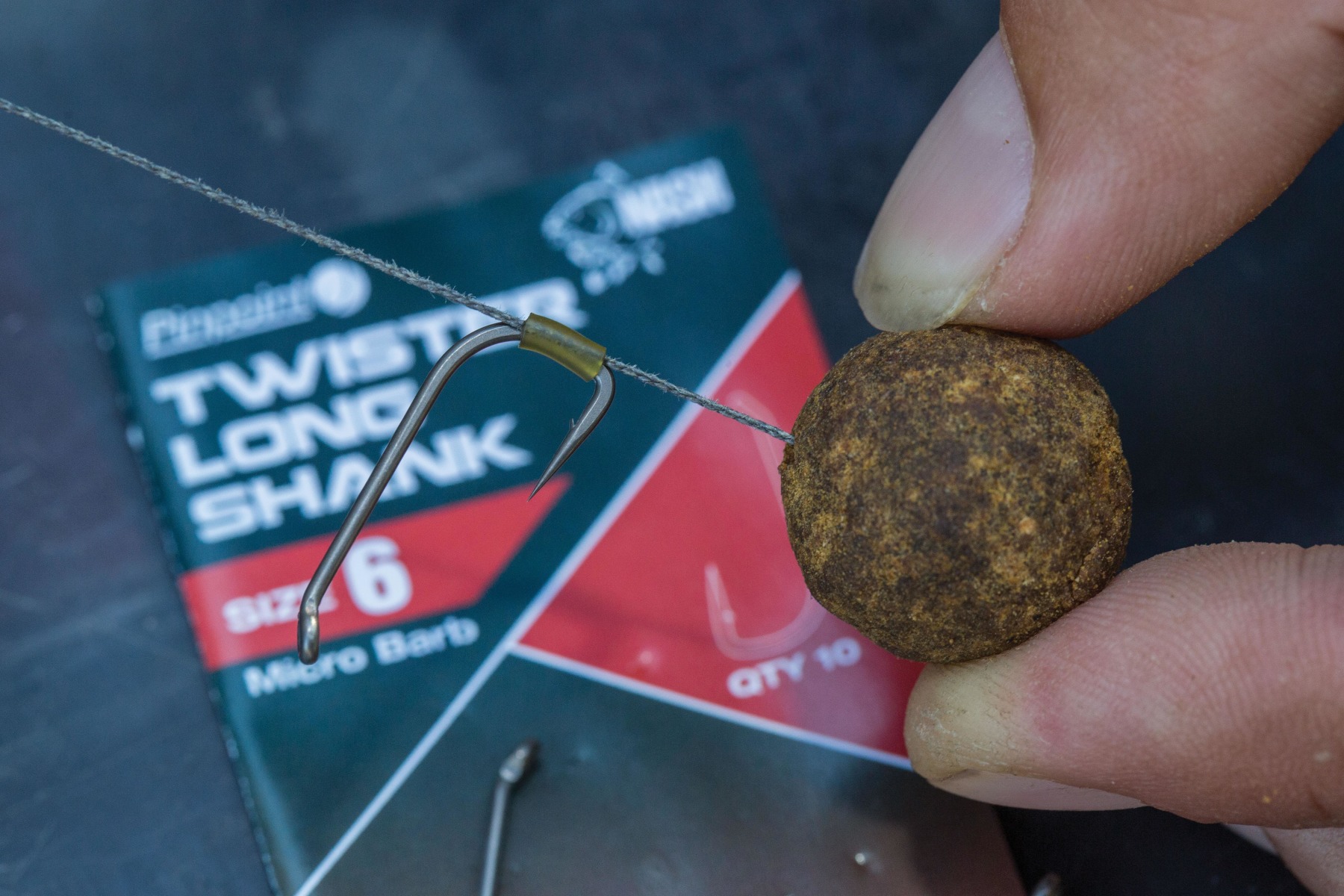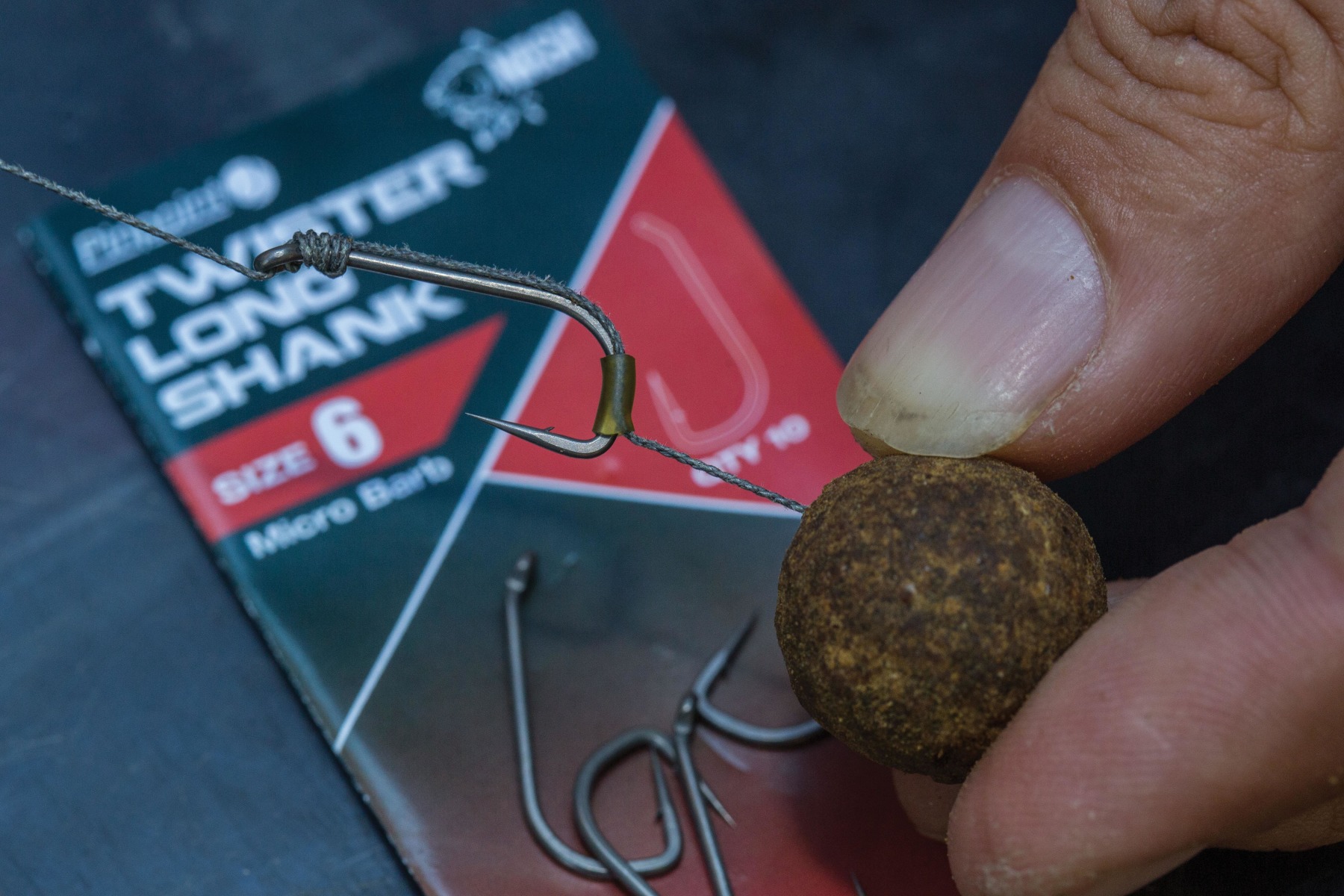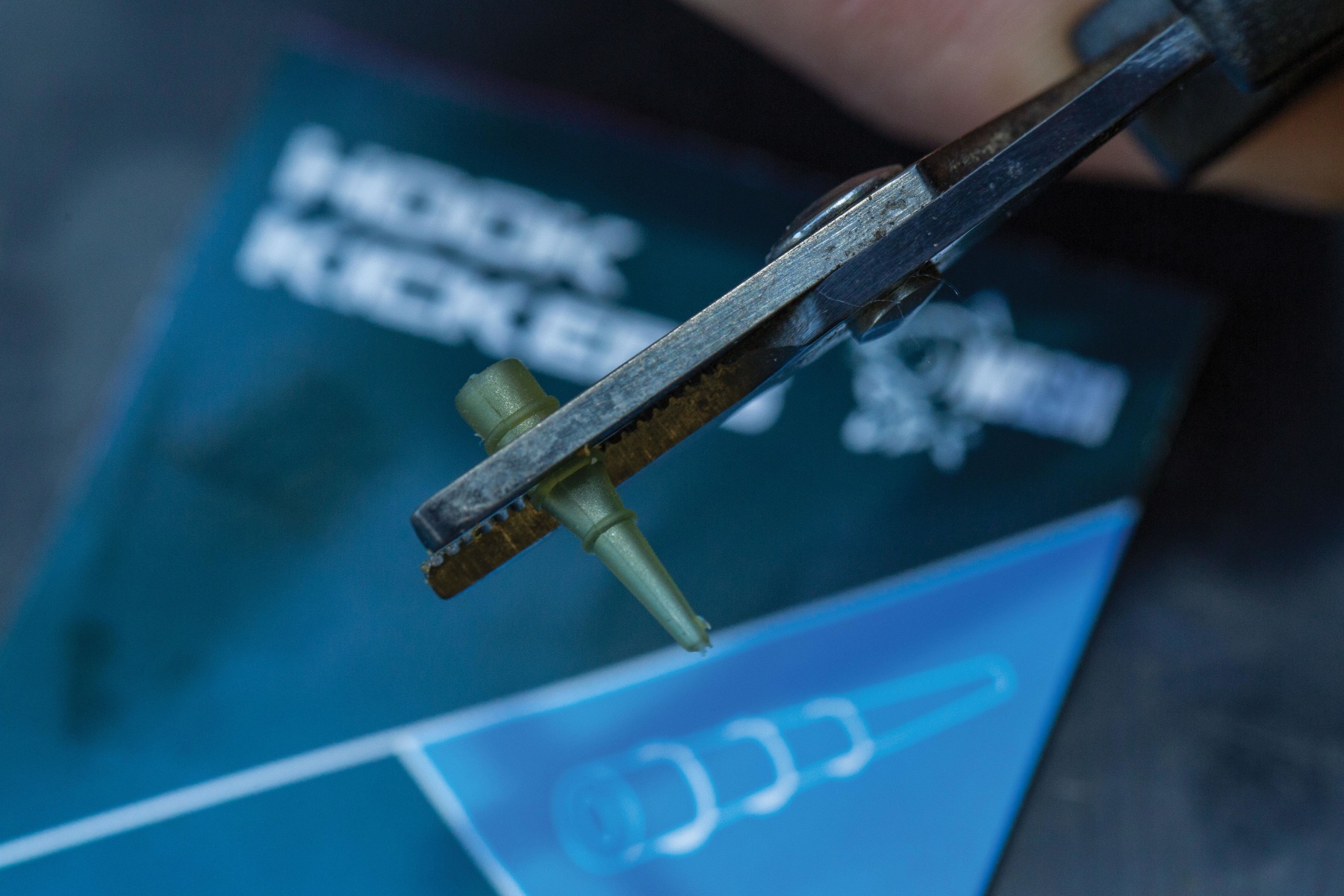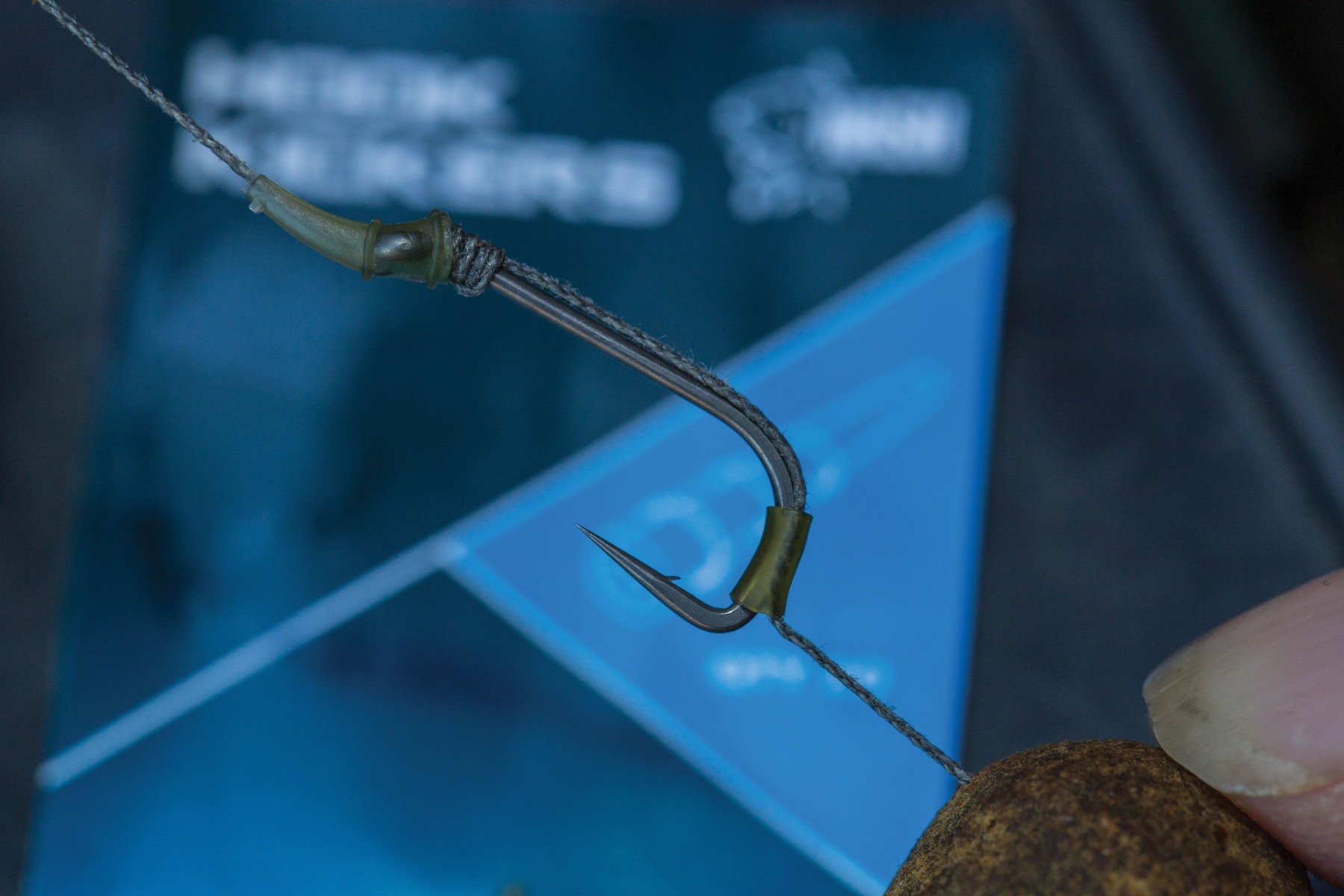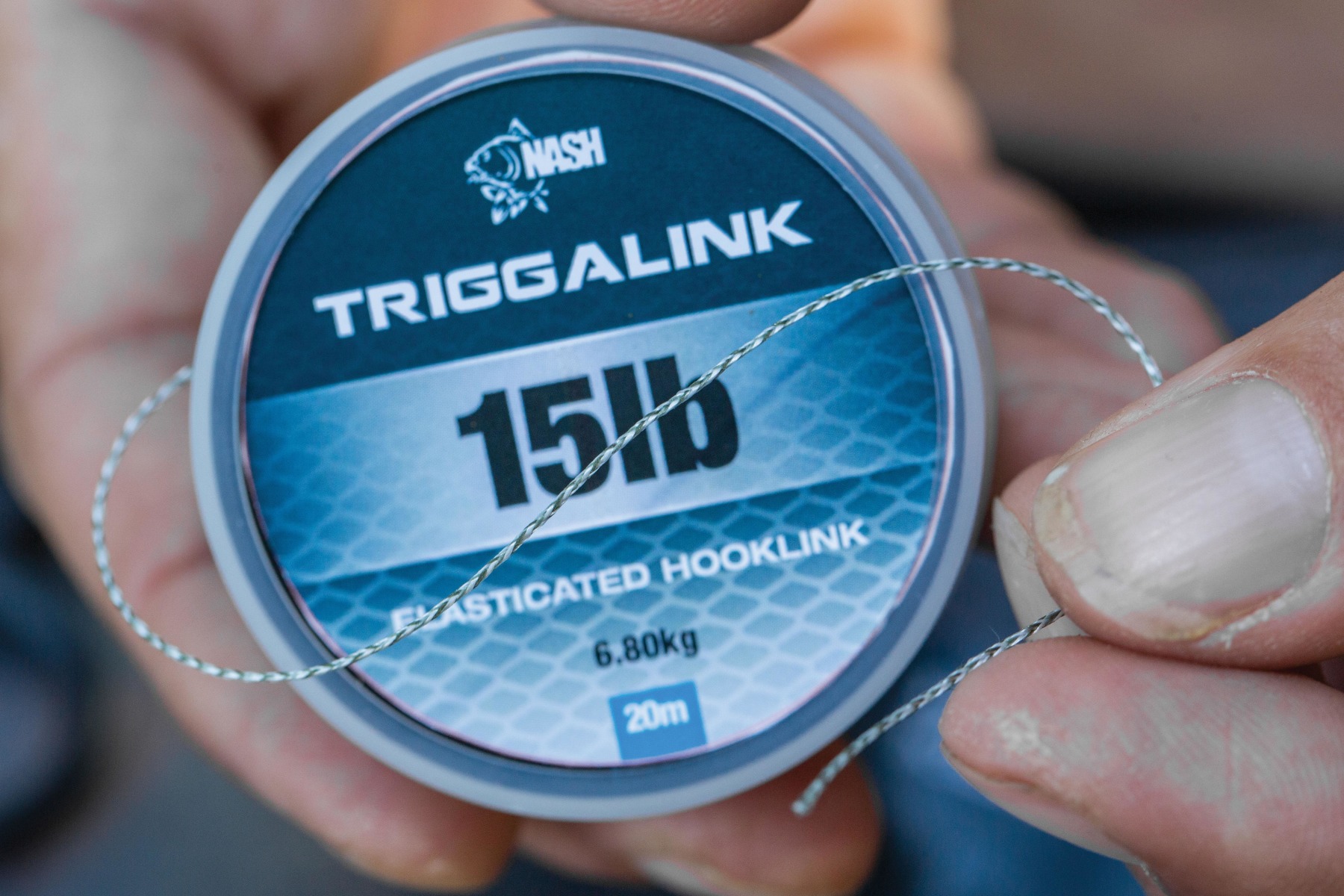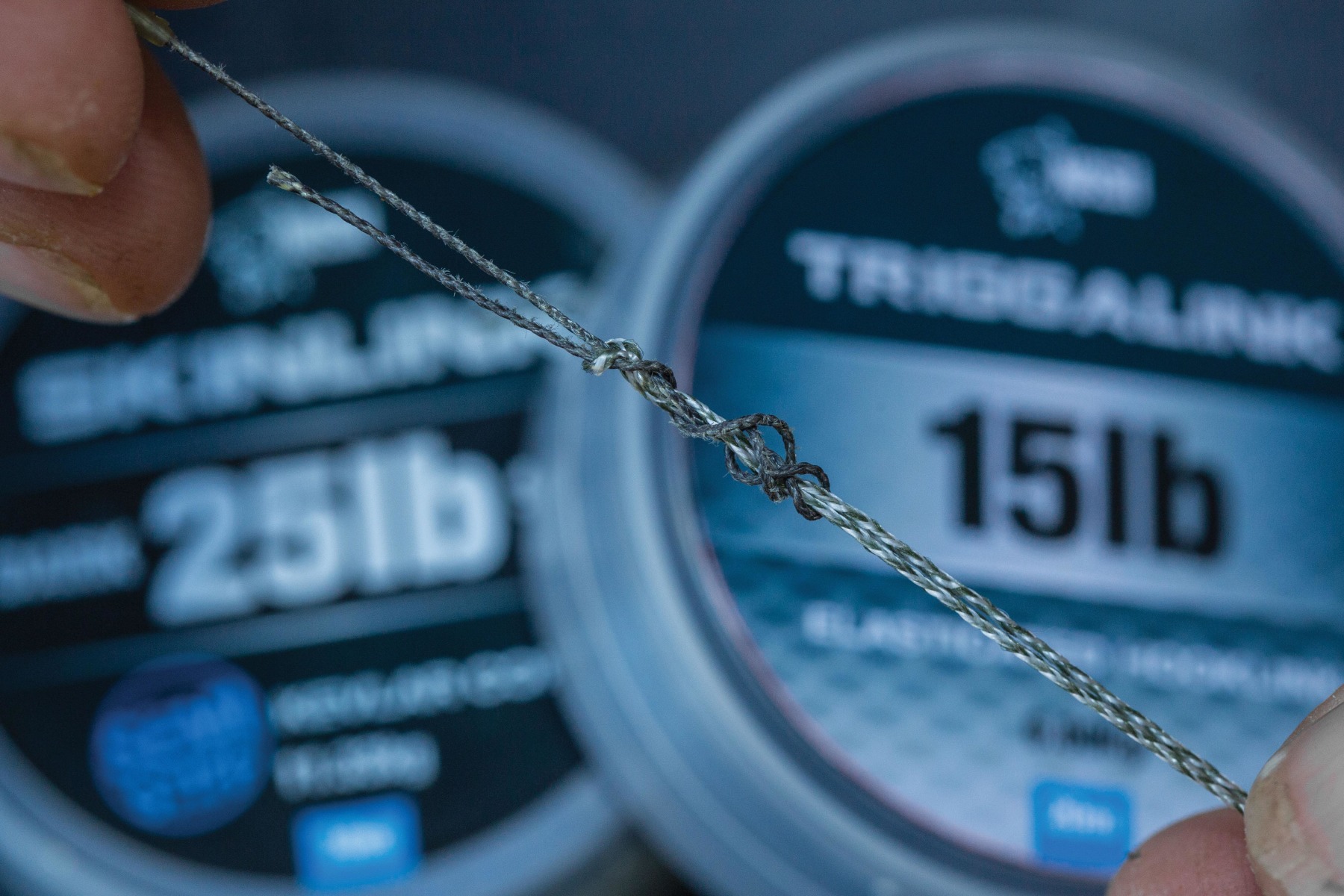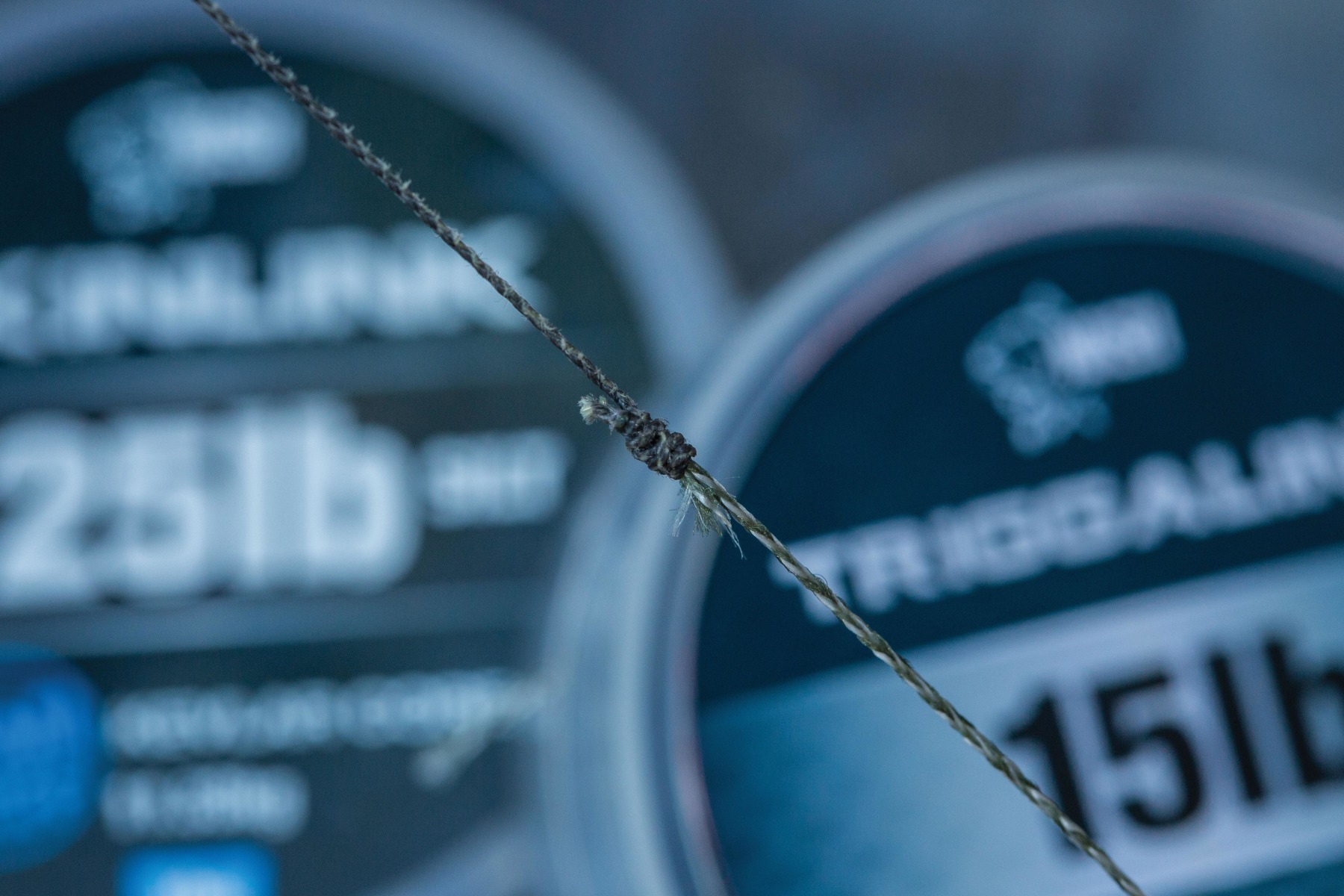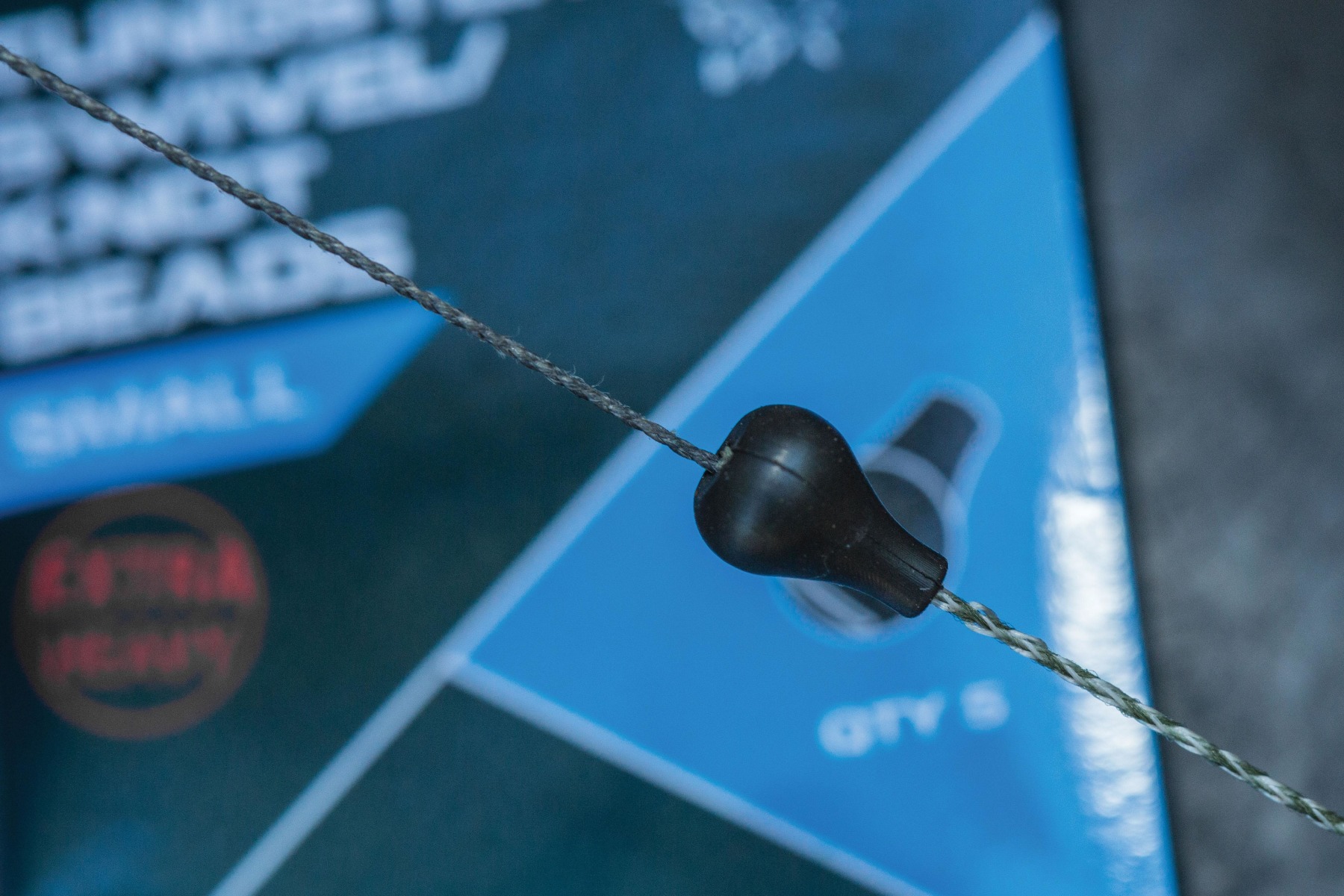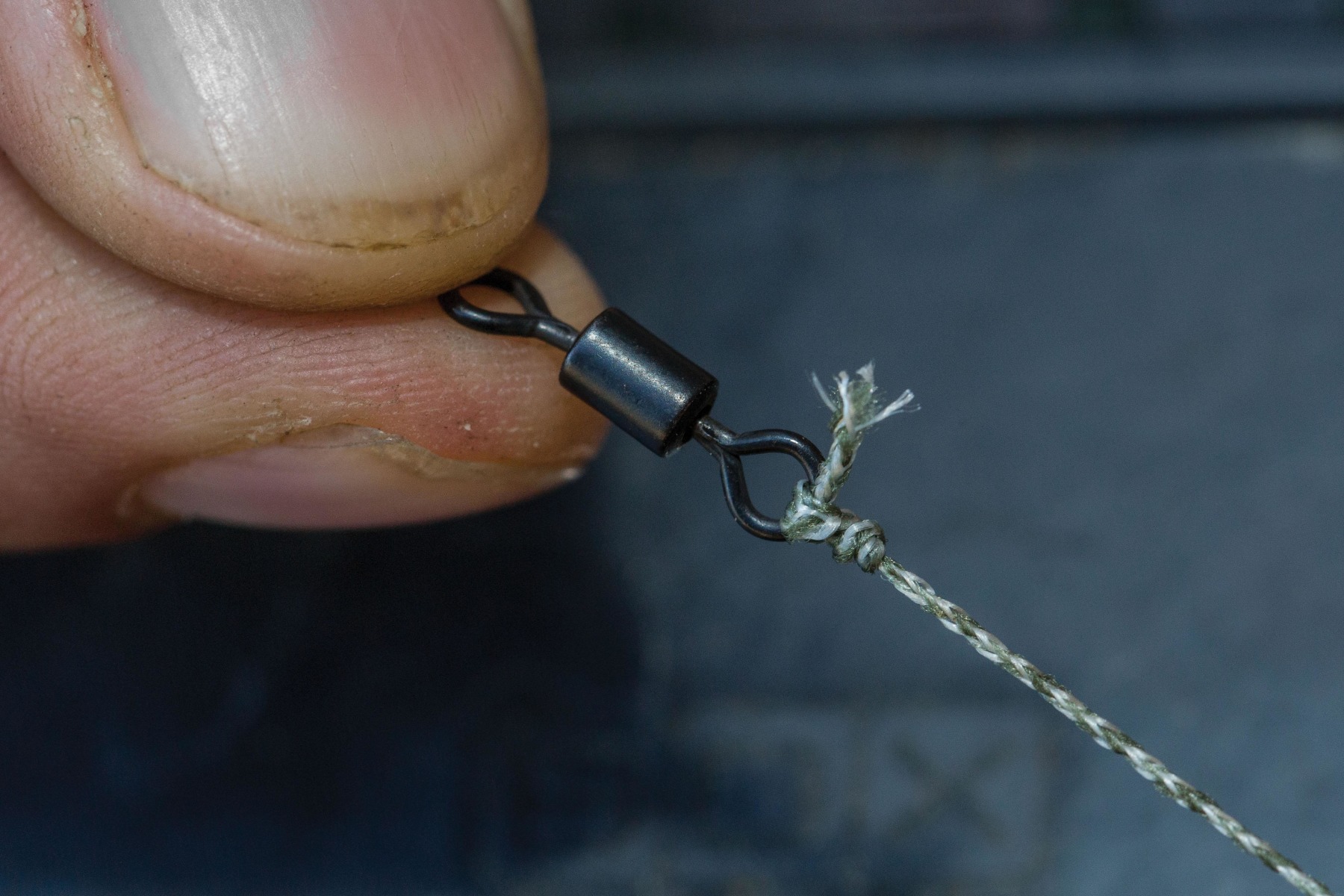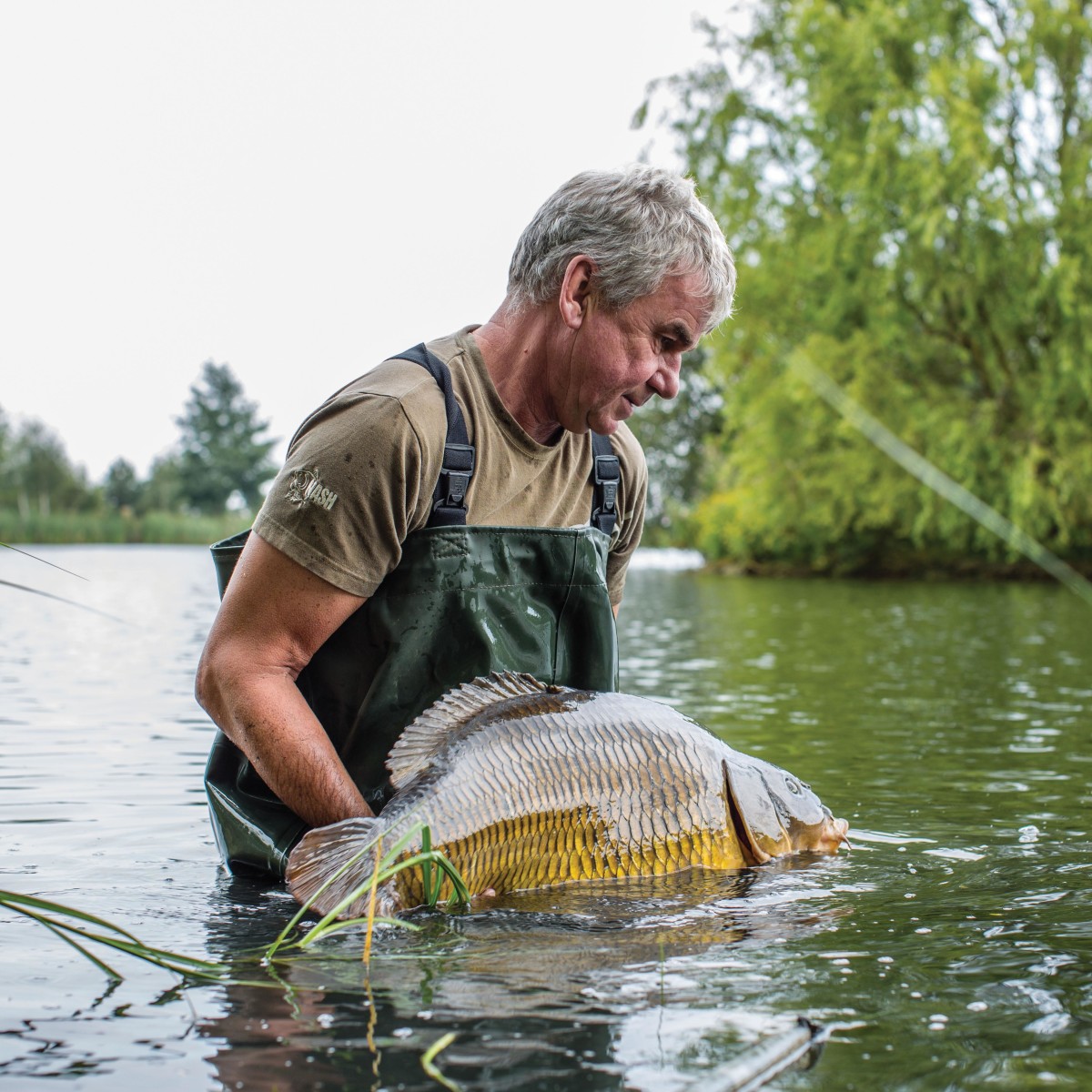
Stretching... The Truth
So what does Kevin Nash rate as one of the biggest edges ever for wary carp? A hooklink material that pulls back...
Elasticity remains the one rig change that the hardest carp simply can’t deal with, and Triggalink is the ultimate way to introduce controlled stretching in a presentation. Using PVA fibres interwoven inside a braided link Triggalink can be knotted and whipped the same as any other hooklink, but once immersed in water the PVA fibres contract to create a rig with elastic like properties, stretching one third of its dry length.
But amazingly, Triggalink once dried reverts back to its original non-stretch state time and time again. In water it becomes ‘primed’ and contracts to become elasticated, when dried it behaves like any other braided link material. A product born of tackling some of the most rig aware carp in the country for many years, Triggalink is absolutely unique.
“The idea came from my conviction that if you build elasticity into a set-up it’s harder for a fish to rid itself of the hook,” Kevin explains. “Riggy carp prick themselves and have many ways to get off the rig, one of the most common is lifting the lead off the bottom, swinging and bouncing it which pulls the hook out. When they try that trick with Triggalink the bungee effect actually pulls the hook in further.”
Kevin had found other solutions to create stretching links just weren’t practical: “I was messing around with pole elastic in my rigs but it was so fiddly and difficult to replicate specific lengths, and the length of the link is really critical to me, I want to tie 8.5-inches not settle for nine. The biggest point of the invention is when you tie up a Triggalink rig it’s non-stretchy which makes rig construction repeatable and accurate. It only becomes stretchy when you want it to – in the water after you’ve cast out.”
The first time Kevin used Triggalink on the Copse Lake was for the filming of the In Pursuit DVD, the first DVD to feature two 50lb UK carp captures. “I can still visualise that indicator twitching before I picked the rod up,” Kevin says. The result was a 50lb common! “I also used Triggalink last year on the Church Lake for the filming of The Guv’nor DVD. Add The Key and Triggalink together and the rest is history.”
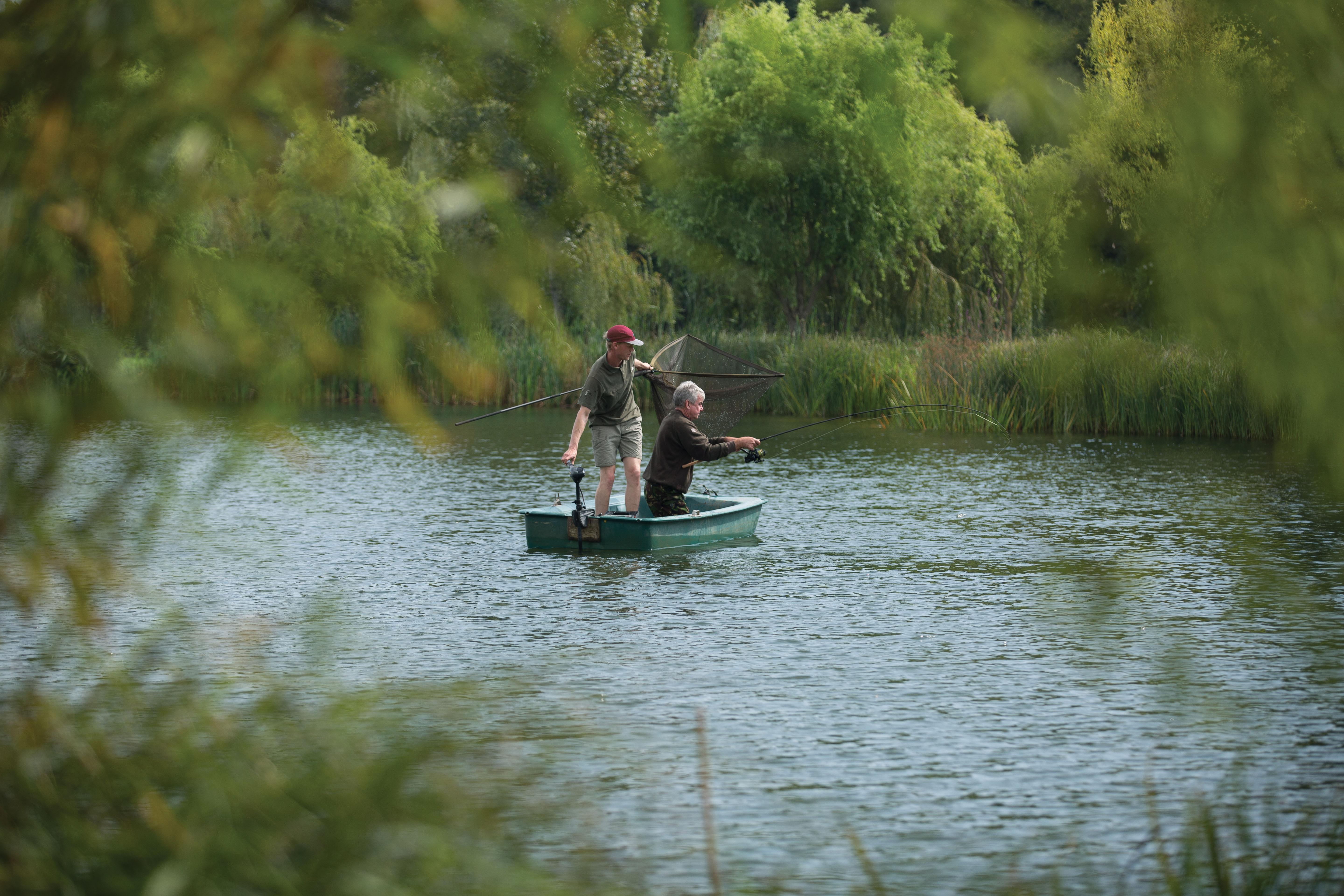
Pricked carp patterns
Kevin points to the takes you get when using Triggalink as showing more clearly than ever what problems a stretching link causes for carp that deal with standard rigs routinely. “I’ve seen it loads of times the first time you take Triggalink to a riggy water takes start with odd bleeps without the indicator moving, you strike and there’s a carp on the end absolutely nailed,” he says. “Out of curiosity I’ve left takes like this and after a time of just odd intermittent beeps you get a screamer, in other words the carp has got to a point where its flight instinct takes over and it knows it’s in trouble and can’t get off. In the end you get a traditional take from a carp that got panicked rather than being able to deal with the rig.” An unexplained bleep – is it a rigged up carp shaking its head?
Stretch study one
Arriving at the French venue he owned at the time Lac de Chateau Cavagnac Kevin found a group of anglers having a terrible time. “They were demoralised,” he recalls. “Between them they had managed to lose 52 carp, fishing at range up against the pads in the venue. The bailiff tried to get them motivated and spent time showing them some rigs, including Trigglink. That night they put Trigglink on and landed 12 carp and only lost one, that was the difference it made instantly. The second major application of Triggalink which is seldom understood is to keep the hook hold secure when carp bury into lilies or weed. It is significantly harder for them to get rid of the hook because of the bungee effect of the Triggalink.”
Stretch study two
Also lodged in Kevin’s memory is the case of a carping friend who was tackling a tricky English syndicate, who had phoned for some advice. “We talked for ages, I put him on the squid bait and somewhere along the line we also mentioned Triggalink,” recalls Kev. “I forgot all about it and five months later he rang again to tell me he was top rod on the venue in his first season and by some considerable margin. He got the odd bleep during the day which he ignored because on that venue the action was all night times. At one point he went through a lean spell and switched to Triggalink, chucked them out during the day and got a bleep, then another, and then a few more unexplained indications – and there was a carp on the end. Cutting a long story short, using Triggalink two thirds of the carp he caught were during the day on a venue where you “didn’t get takes” during the day.”
FROM THE MEN ON THE BANK
Cuttle Mill brace
“I’ve only been using it the last couple of months but it’s interesting stuff. I caught on it first time on a small fish water then used it at Cuttle Mill and had a scraper-30 and a 27-pounder. They were very aggressive takes and without doubt the elasticity of the material helps secure the hook hold when the pressure is on. I believe all fish are head shakers so if they are all getting pricked and getting rid of rigs Triggalink has to help stop head shaking dislodging the hook.” Matt Rhodes
Funny bites!
“I can’t believe how underused this material is. I heard whispers about it before it hit the shelves and couldn’t wait to get my hands on some as it sounded like just the edge I needed for a tricky park lake in Swindon I was fishing. Long story short, I caught three first time out with it, two of which were thirties. Some people didn’t catch that many in a whole season! I was immediately sold on the stuff. It’s so much more than just a hooklength material, it actually does something for you, and it’s the stretch that carp struggle to deal with. I’m not going to say that all carp that pick up your hookbait are going to be nailed (if only), but after using it quite extensively for a number of years it has become apparent that you do get a percentage of quite funny bites, just a few beeps and very slight movements on the bobbin. These have resulted in hooked fish and I’m convinced they are just trying to shake the hook out without bolting. Are these fish that would’ve got away with it using other links? I’m convinced they are! I’ve used Triggalink a fair bit this year and had both my personal best common at 47lb plus and personal best mirror at 49lb on it - nuff said!” Joe Hubble
